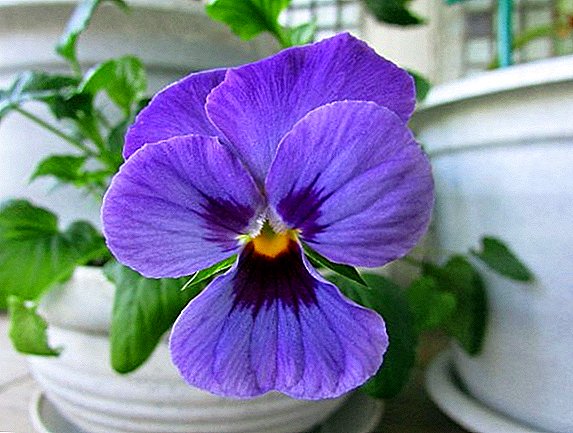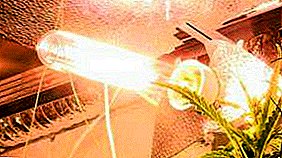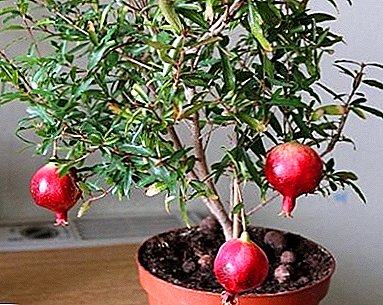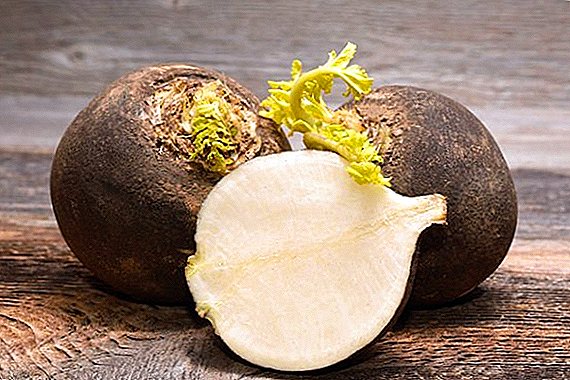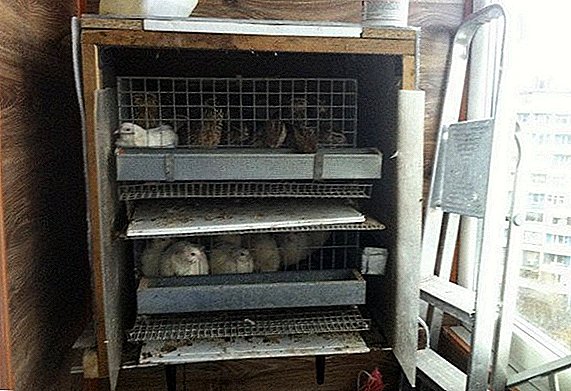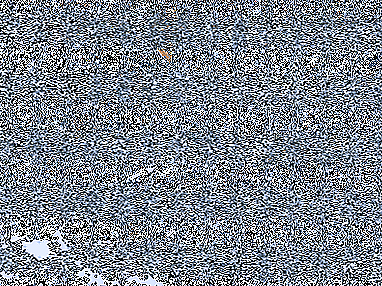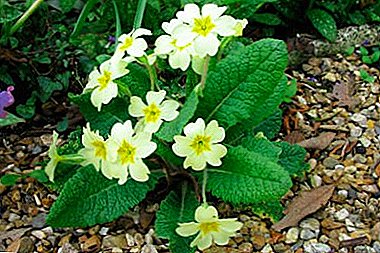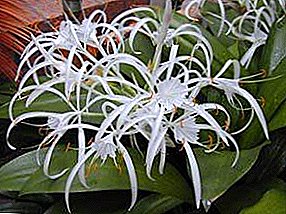
Gimenokallis (hymenocallis narcissus) - an unusually beautiful plant, originally from Latin America, belonging to the Amaryllis family.
The “small homeland” of hymenocallis is Bolivia and Peru, and more specifically, the local river valleys.
This plant is famous for its delicate aroma and unusual shape.
False judgments are often found on the Internet, based on which ismene, pancratium and hymenocallis are the same plants. This is not true because they are different plants of the same family.
The confusion in the systematics can be explained by the fact that genus Hymenocallis still poorly studied because of the fact that the most interesting of its species grow in poorly accessible places.
Hymenocallis was brought to Europe two centuries ago.
Read in detail about growing asters in the open field.
Find out here how to plant astilba on your site.
Features planting mallow: //rusfermer.net/sad/tsvetochnyj-sad/vyrashhivanie-tsvetov/mnogoletnyaya-malva-koroleva-priusadebnyh-uchastkov.html
Planting flowers
Planting of hymenocallis can be performed both in open ground and in pots.
In pots
Growing this plant in a pot should be with the rest period. In the autumn you need to gradually reduce watering.
 After the leaves fall, the plant must be moved to a dark, dry place for a period of about 3 months. Temperature conditions must be maintained in between from 10 to 12 ° C. Watering at this time do not produce.
After the leaves fall, the plant must be moved to a dark, dry place for a period of about 3 months. Temperature conditions must be maintained in between from 10 to 12 ° C. Watering at this time do not produce.
Awakens plant in mid-February. After that it should be brought to the light and very careful watering should begin. Before the appearance of the first leaves, it usually takes no more than one month.
In the ground
Before planting the bulbs in the ground need to germinate. This will positively affect the growth of the plant.
For the germination of bulbs they are transferred to a container of small size, covered with peat and wet sawdust. Be sure to prevent stagnant water to protect the hymenocallis from rotting bulbs.
The temperature during the germination of the bulbs must be kept at from 10 to 15 ° С. Planted hymenocallis in open ground, preferably in the first decade of May.
Gimenokallis is a very capricious plant. It does not tolerate frost. Soil for it should be of light composition, the plant requires good solar lighting.
 With an insufficient amount of water, he refuses to bloom, waterlogging can cause bulbs to rot, and, consequently, the death of the plant.
With an insufficient amount of water, he refuses to bloom, waterlogging can cause bulbs to rot, and, consequently, the death of the plant.
It is impossible to water the hymenocallis under the root, therefore usually make special grooves that are located at a distance of several centimeters from the plant.
When planting hymenocallis need give preference to mineral fertilizersand not manure or humus. Manured soil has a detrimental effect on the plant. During the growing season it is possible to fertilize plants no more than 4 times..
Fertilizers should be comprehensive.
Care rules
Gimenokallis is very demanding of light: when placing a plant in an apartment, it should not be placed near the windows of the north side.
In summer, hymenocallis is better to be in the garden until September.
When landing, avoid places with direct lighting.
But in the cold season it is necessary to maintain comfortable conditions with the help of fluorescent lamps.
Temperature
During the growing season, hymenocallis is suitable temperature 19-21 ° C, after flowering, it should be reduced to 15-17 ° C. The bulbs are stored at a temperature of 9-11 ° С.
Rules for the cultivation of tulips in the open field.
Read on our site how to grow lilies in the country: //rusfermer.net/sad/tsvetochnyj-sad/vyrashhivanie-tsvetov/liliya-prekrasnyj-tsvetok-dlya-lyubogo-sada-kak-uhazhivat-za-liliej.html
Watering
During the growing season, water abundantly water hymenocallis with soft settled water, so that only the top layer of soil dries out in between waterings.
Peresushka plants will lead to negative consequences: with a lack of moisture leaves lose elasticity and begin to fade. After flowering is usually limited to watering.
Soil and transplanting
 Young plants require transplantation about once every 1-2 years, adults are transplanted as needed.
Young plants require transplantation about once every 1-2 years, adults are transplanted as needed.
Change the "housing" hymenocallis spend only in the rest period.
When choosing dishes remember that this plant, oddly enough, blooms better in cramped pots.
The soil for hymenocallis should be loose and nutritious. Be sure to make a drain, in the form of simple holes, at the bottom of the pot.
Before planting, do not forget to inspect the bulbs, carefully remove the rotting places, sprinkle the cuts with charcoal.
Top dressing
During the growing season and during flowering, feed hymenocallis no more than once a week.
During the rest period, the frequency of feeding should be reduced to 1 time per month.
Breeding
 Gimenokallis breeds with the help of babes - small bulbs that appear around a large bulb, after it reaches 4 years of age.
Gimenokallis breeds with the help of babes - small bulbs that appear around a large bulb, after it reaches 4 years of age.
The plant blooms almost until the very end of autumn. Dig the bulbs at the moment when the leaves begin to freeze.
At the same time, the roots of the bulb should be preserved, and it should be washed and dried well.
A cool, dry and well ventilated room will ensure the safety of the bulbs.
Indicators that will help you recognize mistakes when growing
Care errors can be identified by the following factors:
- by the pale green color of the leaves, the drooping flowers one can judge about insufficient watering;
- flowers begin to turn black gradually - this is a sure sign that the plant is cold and (or) damp;
- the flowers turn pale, and brownish-yellow spots appear on the leaves - a sign of excess sunlight;
- all the leaves start to fade very quickly, and the lower ones just turn yellow - it means that it is too damp;
- Hymenocallis does not want to bloom - it is possible that the plant's rest period was disturbed or the place for it was chosen with insufficient lighting.
Learn in detail how to grow dahlias in the country.
Also find out about marigold diseases and pests: //rusfermer.net/sad/tsvetochnyj-sad/vyrashhivanie-tsvetov/barhattsy-neprihotlivye-istochniki-fitontsidov.html
Hymenocallis Diseases
With anthracnose affected leaves become covered with dark spots, and brownish drips sometimes appear on their tips.
To combat this disease, you must take the following steps:
- remove and burn diseased leaves;
- process the plant with systemic fungicide (foundationol);
- reduce watering;
- regularly air the room.
 When staganospore the bulbs are covered with red spots, due to which this disease is sometimes called red burn.
When staganospore the bulbs are covered with red spots, due to which this disease is sometimes called red burn.
The spots are small at the beginning, but they quickly cover the entire bulb, and then the leaves. The bulb looks as if it was scalded in boiling water.
To combat staganspore in the early stages of the disease, treat the plant with a foundation solution, at the rate of 2 g per liter of water, if hymenocallis is severely affected, then smear it with a creamy mixture of 100 g of chalk, 5 g of copper vitriol and 10g of OP-7 adhesive.
As you can see, with proper care and such an exotic plant as hymenocallis, can feel comfortable in our latitudes.


 Read in detail about growing asters in the open field.
Read in detail about growing asters in the open field. Rules for the cultivation of tulips in the open field.
Rules for the cultivation of tulips in the open field. Learn in detail how to grow dahlias in the country.
Learn in detail how to grow dahlias in the country.